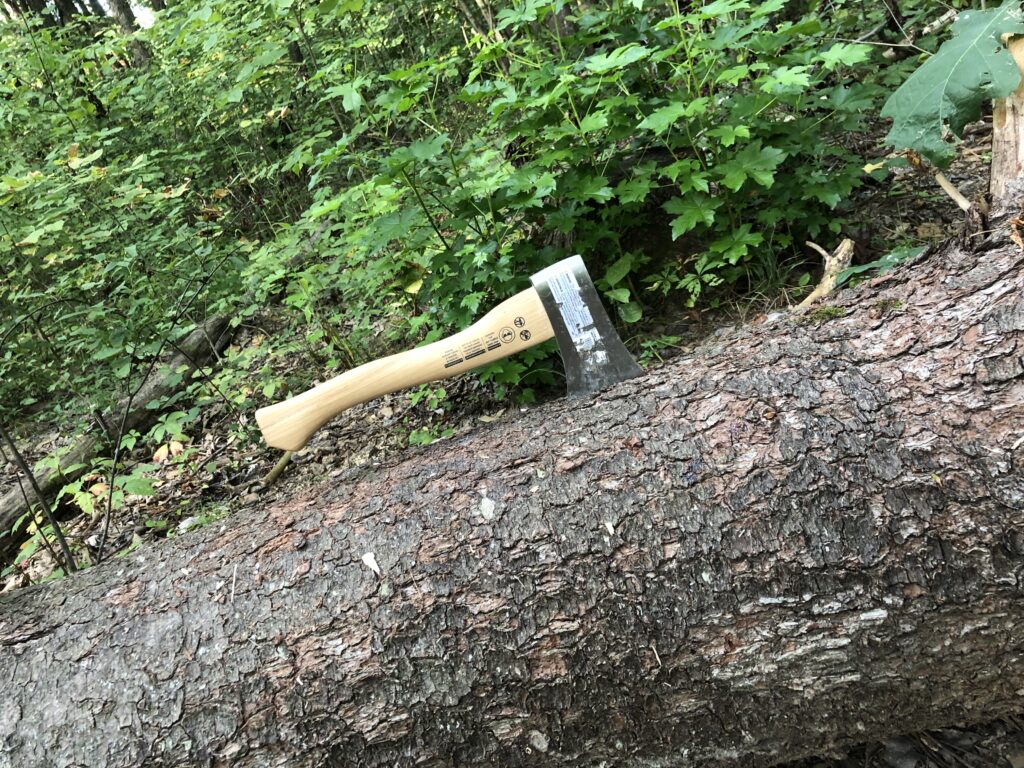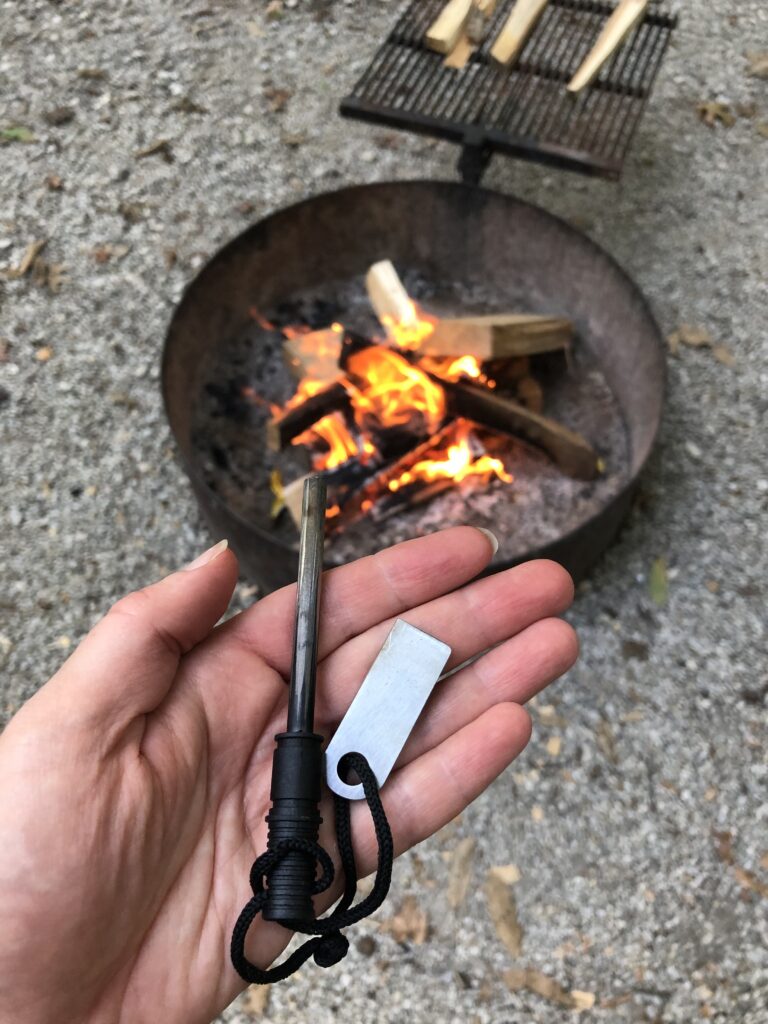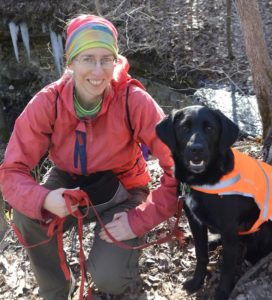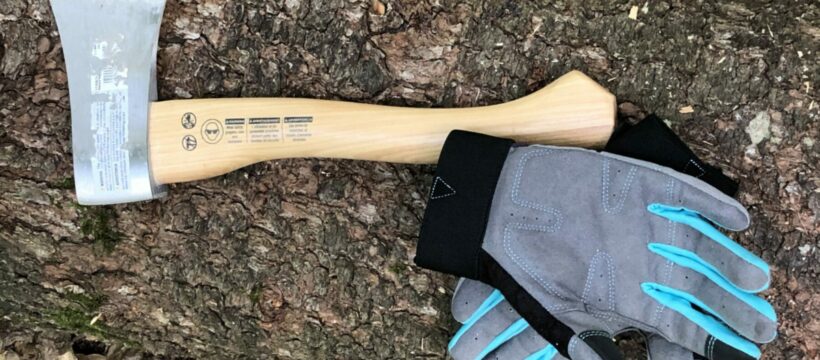If you stumbled across this blog while looking for information on how to handle a hatchet, I recommend this YouTube video I discovered the other day. That video might get you closer to what you’re actually looking for. But while you’re here, you might be curious what kind of rambling connection I’m going to make on the topic. If so, then come along. I’m curious too.
You might wonder why I have a YouTube video on hatchet handling at my fingertips.
Fingertips is the key word in that sentence.
You see, a couple weeks ago I learned a friend had her hand run over by a car (something about setting blocks under the wheel when the emergency brake let loose). Shortly after that, I learned a coworker nearly lost her pinky finger to a sledgehammer (something about clearing out some old patio pavers).
It was against this backdrop that I began to second guess my desire to buy a hatchet.
To hatchet or not to hatchet
My desire to buy a hatchet originated from the wish to split campfire wood with something more travel-able than the 3lb 30” behemoth in the garage. This desire was expedited by an approaching (solo) camping excursion. Previously I had only flung an ax when another person was around. I thought perhaps a hatchet would be more manageable. (Which, according to many self-proclaimed experts on google – and what’s not to trust about a self-proclaimed expert on google – is actually a false assumption. Despite the alluring size of the hatchet, the longer handle of an axe makes it a modicum safer than a hatchet.)

I ran to the local hardware store on my lunchbreak. I watched videos on how to handle a hatchet. And I looked up how many times the word hatchet appears in the Bible. (Only once. Can you find it?)
From my recently acclaimed favorite-for-now book of the Bible, I read: If the ax is dull and its edge unsharpened, more strength is needed, but skill will bring success. Ecclesiastes 10:10.
Based on this, I felt it was prudent to watch some more YouTube videos.
Hatchet in action
In the end I shoved the scary thoughts aside and took my newly acquired hatchet on my outdoor adventure. It pounded tent stakes much easier than shoving them in with my boot, and for that alone I deemed it a success. Then I tackled the wood.
The hatchet’s small size barely bit the first log I attempted. After a dozen cuts, I pulled the hatchet out in defeat. I wasn’t brave enough to swing any harder. “Skill will bring success,” I thought, as I hunted for a smaller piece.
I was scared to do something foolish, but I also knew I wasn’t being unreasonable. I set up my new attempt and heard the tell-tale crack as the hatchet came down. Slowly but surely, I splintered that wood into kindling fine enough to start with a ferro rod. (I also used a cotton ball and strips of cardboard, but it was my first full-fledged ferro-rod fire so I give myself some leniency.)
Scared and unafraid
Here’s what I learned from this experience.
It’s okay to be scared. Jesus never said to not be scared.

He said: Do not be afraid. Do not fear.
He never said: Do not be scared.
You might think this is splitting hairs – isn’t being scared and being afraid the same thing?
I don’t think so.
I think this is on the order of “be angry and sin not.” There is the emotion, and then there is what we do with the emotion.
I’m not trying to argue a new doctrine here, but I think there is a point worth considering. The word scared means “thrown into or being in a state of fear, fright, or panic.” Think of that surge of adrenaline, the startled shock of when something unexpected scares you. There is a sharpness to being scared.
Scared is an adjective that describes how we feel when something has happened to us.
Fear is different. Fear is “an unpleasant often strong emotion caused by anticipation or awareness of danger and accompanied by increased autonomic activity.” Fear is focusing on future danger, instead of on the One who walks with us in the here and now. This means we choose fear by where we focus our attention. This anticipation and awareness then drives up autonomic activity (heart rate, breathing, upset stomach). The more we fear, the more we feel afraid.
Fear is first a verb, and then a noun. It is something we do. Then it is something we have.
If we do not ever let it go, then fear will fill us. And “filled with fear” is the definition of afraid.
Stick with me.
If scared is an adjective that describes how we feel when something has happened to us, then afraid is an adjective that describes how we feel when our own thoughts have happened to us.
There is a reason Jesus said, “Fear not.” Do not become afraid.
Lots of things can scare us, but there is only one thing we are ever afraid of. That one thing is our own thoughts.
Here is the connection
I was a little scared of the hatchet. I did not let those scaredy feelings grow into fear.
“Skill will bring success,” I said. I started small. I studied slowly. I splintered wood into a successful fire.
I was scared, and unafraid.
And that, my friends, is how you handle a hatchet.
———-

Janet Beagle, Ph.D. serves as director of graduate programs for Purdue University’s College of Engineering and is a writer, a Bible study teacher, and a student of God’s Word. In her spare time, she likes to eat other people’s cooking and hike with her two- and four-footed friends. Read more of Janet’s Christian reflections at www.mustardpatch.org




Thanks for a new perspective, Janet.
Loved hearing the distinction between being afraid and fearful. Glad you succeeded in building that fire! I have to go- I’m googling up ferro rod.
Loved this! Scared and unafraid. I’ve been there. Thanks for sharing, Janet.
Loved this! Scared and unafraid. Great lesson on perspective. I’ve been there too… Thanks for sharing, Janet.
Thanks, everyone! It’s is certainly easier to say than to do sometimes – scared but not afraid!